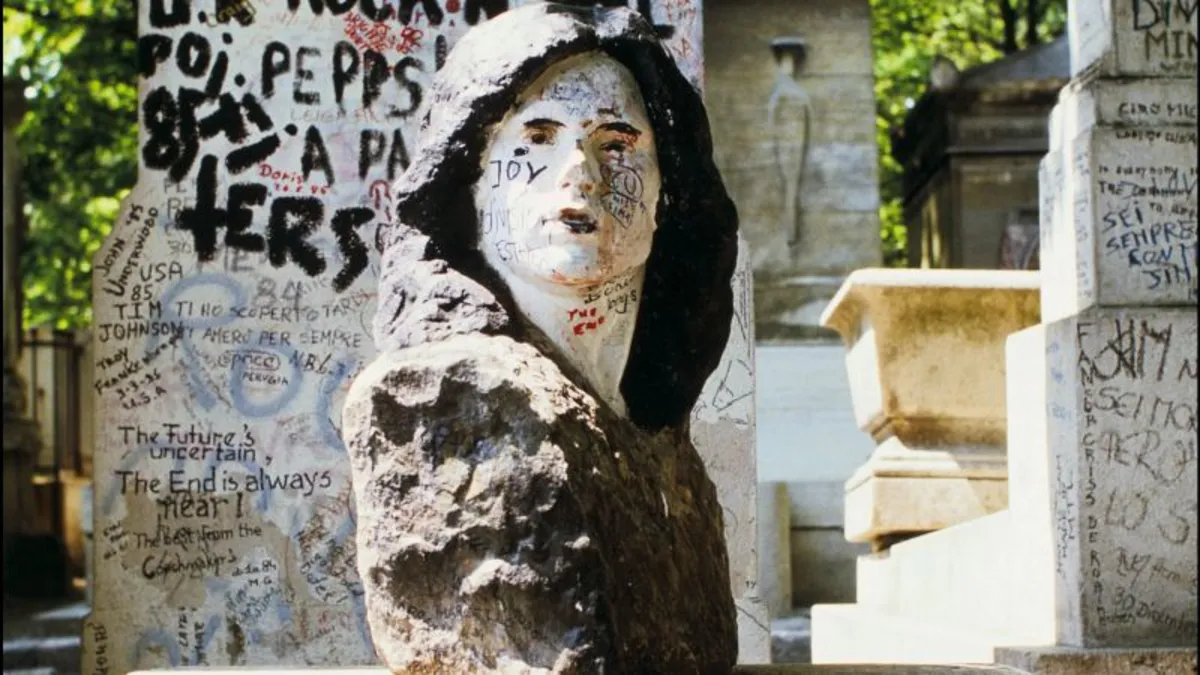
A remarkable turn of events has unfolded in the world of music history as a sculpture of the late American singer and poet Jim Morrison has been recovered after nearly four decades. French police recently announced the return of the bust of Jim Morrison, which was stolen from his gravesite at the iconic Père Lachaise cemetery in Paris back in 1988. This news brings a sense of closure to fans and his family alike, as the sculpture is not just a piece of art but a significant symbol of Morrison's legacy.
According to the Paris Regional Judicial Police Directorate, the bust was found during an investigation led by the Financial and Anti-Corruption Brigade, operating under the Paris Public Prosecutor’s Office. The recovery was described as a "chance discovery" made during a judicial search ordered by an examining magistrate. This serendipitous finding has captivated the attention of Jim Morrison enthusiasts and historians alike, who have long mourned the loss of this important artifact.
Jeff Jampol, the manager of the Jim Morrison Estate, expressed his satisfaction regarding the bust's rediscovery. In a statement to CNN, he remarked, "We’re happy to hear of the statue’s rediscovery. Obviously it’s a piece of history, and one Jim’s family wanted there on his grave, so it’s gratifying to see that it’s been recovered." Jampol highlighted the importance of the sculpture and noted the anticipation surrounding its condition following such a long absence.
Jim Morrison, the charismatic frontman of the groundbreaking 1960s psychedelic rock band The Doors, passed away at the young age of 27 in 1971. His grave, located in the Père Lachaise cemetery, is one of the most visited sites in Paris, drawing hordes of music fans each year, particularly on the anniversary of his death, July 3. The official tourism website of Paris recognizes Morrison's grave as a significant cultural landmark, further solidifying his enduring influence.
The bust, crafted by Croatian sculptor Mladen Mikulin, was first installed on Morrison's tombstone on the 10th anniversary of his death. Unfortunately, it vanished in 1988, leading to years of speculation and disappointment among fans. Following the bust's disappearance, Morrison's headstone was damaged and subsequently replaced by his family in 1990, featuring the epitaph "True to His Spirit" inscribed in Greek.
Over the years, commemorations at Morrison's grave have attracted large crowds. For instance, during the 20th anniversary of his death in 1991, police resorted to using tear gas to disperse rowdy fans. By the time the 30th anniversary rolled around, restrictions were placed on alcohol and music, yet thousands still gathered to pay their respects, leaving wreaths and capturing memories through photographs. Former Doors keyboardist Ray Manzarek once noted, "Every day, somewhere in the world, a Doors song is played. The energy of Jim Morrison is still with us, in the ether."
Known as "The Lizard King," Jim Morrison cultivated a reputation for his wild onstage behavior and heavy drinking. After leaving The Doors in 1971, he turned his focus toward writing poetry and moved to Paris with his girlfriend, Pamela Courson. Tragically, he died in their shared apartment later that same year. Courson discovered him unresponsive in the bathtub, and while his death is officially attributed to heart failure, the absence of an autopsy has fueled numerous conspiracy theories surrounding his untimely demise.
The recent recovery of Jim Morrison's bust not only restores a piece of music history but also reignites interest in the life and legacy of one of rock's most enigmatic figures. Fans and historians alike will now await further updates regarding the condition of the sculpture and its future placement at the iconic gravesite.